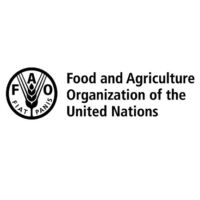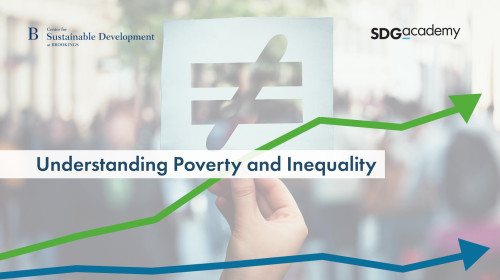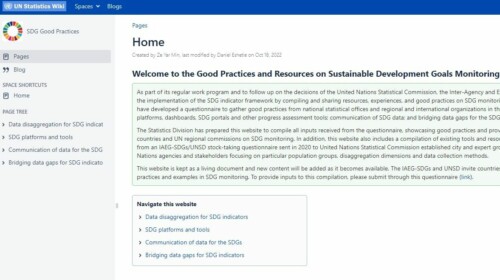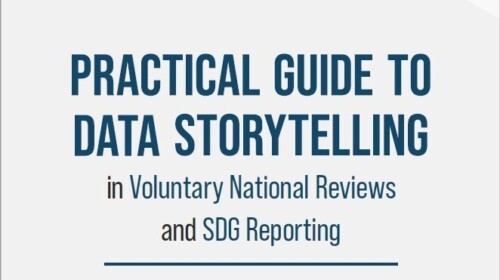Seven years into the 2030 Agenda, there is an urgent need to understand where the world stands in eliminating hunger and food insecurity, as well as in ensuring sustainable agriculture. FAO's new report, “Tracking progress on food and agriculture-related SDG indicators”, offers analysis and trends on indicators across eight SDGs (1, 2, 5, 6, 10, 12, 14 and 15), highlighting areas of progress and areas where further effort is needed.
Available in digital format, this year’s edition also discusses, selected indicators for which FAO is a contributing agency and/or have key implications for food and agriculture across these Goals. These additional indicators provide valuable information on agricultural losses due to disasters, the distribution of land tenure rights, and the impact of international trade policies and regulations on agricultural trade, especially in developing and Least Developed Countries.
This edition also includes a snapshot on conflict, COVID-19 and food insecurity, as well as a special chapter on measuring productive and sustainable agriculture, with progress toward SDG Target 2.4 analysed for the first time.
Some of the report’s highlights include:
- Comparing progress achieved in 2022 with respect to the previous year, only three indicators (the conservation of plant genetic resources, instruments to promote small-scale fisheries, and water use efficiency) register a notable improvement. By contrast, investment in agriculture has stalled, whereas indicators related to food security, fish stock sustainability, forest cover, and the value added of sustainable fisheries, are deteriorating.
- The latest forecasts estimate that rising inflation and the impacts of the war in Ukraine could push an additional 75 to 95 million people into extreme poverty in 2022, compared to pre-pandemic projections.
- Despite hopes that the world would recover from the effects of the COVID-19 pandemic and food security would begin to improve, world hunger rose further in 2021. After remaining relatively unchanged since 2015, the prevalence of undernourishment jumped from 8.0 to 9.3 percent from 2019 to 2020 and rose at a slower pace in 2021 to 9.8 percent.
- Globally, food loss estimates have remained fairly steady, showing no progress towards the target, while substantial variation across regions and subregions have been recorded.
- The agricultural sector has borne the brunt of economic losses due to frequent natural disasters. Direct economic losses attributed to disasters amounted to USD 15.4 billion in 2020, of which USD 6.8 billion were recorded in the agricultural sector.
- Small-scale food producers continue to be disadvantaged compared to larger farmers, both in terms of productivity and income. In half of the countries with available data, female-headed small-scale food production units earned 30 to 50 percent less than that of units headed by men.
- Food price volatility rose sharply from 16 to 47 percent in 2020, exacerbated by the constraints placed by the COVID-19 pandemic, associated lockdowns and market uncertainties, and, more recently, by the broader impact of the war in Ukraine.
- Progress remains weak in maintaining plant and animal genetic diversity for food and agriculture.72 percent of assessed local livestock breeds remain at risk of extinction.
- Gender inequalities persist in ownership and secure tenure rights over agricultural land. In 29 out of the 36 countries with available data, the share of women with ownership and/or secure tenure rights over agricultural land is significantly lower than for men, even though women represent about half of the total agriculture labour force in most countries.
- Although it remained at a safe level (18.6 percent in 2019) globally, water stress continued to rise in already critically affected regions, threatening progress towards sustainable development.
- Good progress have been achieved in combatting illegal fishing, but the sustainability of global fishery resources continues to decline, although at a reduced rate in recent years (from 90 percent in 1974 to 66.6 in 2015, and 64.6 in 2019).
- Significant progress have been reached globally towards sustainable forest management, but forest loss remains high (with a decline of 100 million ha over the course of past two decades).
- Positive developments towards reducing agricultural export subsidies have emerged in recent years: total notified annual outlays fell from their peak of USD 3.84 billion in 2003 to USD 58 million in 2019.
- Duty-free access for developing and Least Developed Countries (LDCs)’ exports in international markets has improved in recent years, particularly for agricultural products, while the overall growth of exports from LDCs remains worryingly low - at less than 1 percent in 2019 – a figure that has remained virtually stagnant for a decade.
Online report | Printable version [pdf] | Press release








